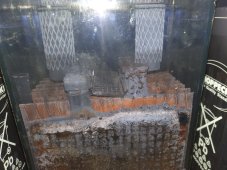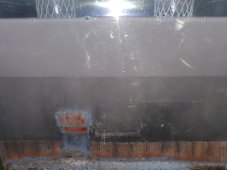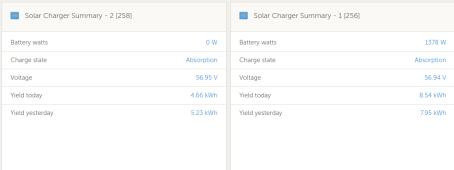wibbleypants
New Member
Hello all.
I have a bank of 24 Hoppecke 910ah 2v batteries. As soon as they start to discharge, the voltage drops to 45. A few kW of load will soon drag that down to 43 and then the inverter shuts down (Victron).
I just went up into the loft to check electrolyte levels and see that about half of the cells have electrolyte resembling soup (midday sun) and most of the rest are not quite so soupy. However, one of the cells' electrolyte looks completely clear.
Should I just bite the bullet and bin the lot? Or replace the non-fizzy cell?
Let's see if I can embed photos of two cells here:


I have a bank of 24 Hoppecke 910ah 2v batteries. As soon as they start to discharge, the voltage drops to 45. A few kW of load will soon drag that down to 43 and then the inverter shuts down (Victron).
I just went up into the loft to check electrolyte levels and see that about half of the cells have electrolyte resembling soup (midday sun) and most of the rest are not quite so soupy. However, one of the cells' electrolyte looks completely clear.
Should I just bite the bullet and bin the lot? Or replace the non-fizzy cell?
Let's see if I can embed photos of two cells here:





